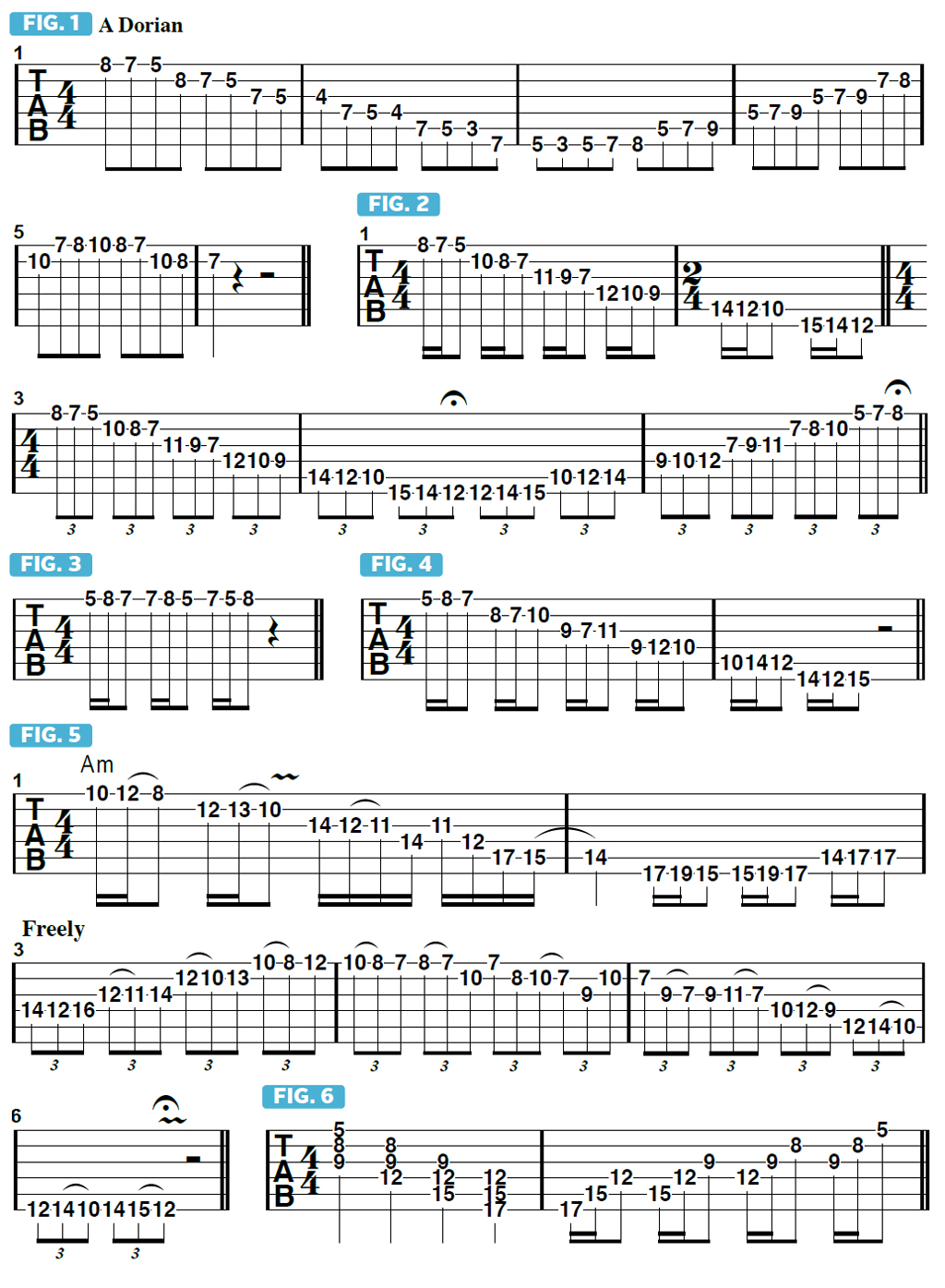Navigate the fretboard with ease using these simple scale pattern exercises
Dweezil Zappa walks you through some quick tricks to enhance your playing
In this lesson, I’d like to present some techniques that I have found to be very helpful in overcoming the challenges of moving around the fretboard freely and creatively in the quest for new and different sounds and the discovery of uncharted territory.
In performing my dad’s music, I have had to figure out alternate ways to play specific passages, because at one tempo, you might play it one way, but at a different tempo you find it’s better to play it another way. This led me to learn how to approach and play scales in different ways, which in term has reaped additional benefits as an improvisational tool.
Let’s start with a commonly used mode, A Dorian mode (A, B, C, D, E, F#, G), as shown in 5th-7th positions in FIGURE 1. The first twist is to play three-notes-per-string patterns that continually shift positions while moving across adjacent strings, as demonstrated in FIGURE 2.
In bars 3-5 of this example, I play the patterns as descending and ascending eighth-note triplets. When you play through these positional shifts in this way, it’s easy to see how this approach can inspire alternate improvisational options. You begin to view the fretboard diagonally and can recognize and process the potential positional changes more quickly.
The next level of this concept is to change the sequence of the three-note “cells.” Instead of moving in either a straight ascending or descending direction, you can play the three notes in varying sequence, or order, as demonstrated in FIGURE 3.
These shifts may seem a little weird and unnatural at first, but eventually you’ll find that you can ultimately attain more speed and confidence
In FIGURE 4, we mix things up, in terms of melodic contour, as we move across all of the strings. Try using this approach when improvising your own original melodies. You’ll find that, by its very nature, it can help you create interesting musical lines, like those presented in FIGURE 5.
I recommend taking any of the variety of scales that you know and applying position shifts as you move from string to string. It is also very useful to see the three-note shapes on each group of three adjacent strings, as shown in FIGURE 6.
All the latest guitar news, interviews, lessons, reviews, deals and more, direct to your inbox!
The diagonal look of these hand positions, or grips, can open up all kinds of new doors to musical expression. You will begin to visualize the many positional challenges that are right there in front of you, offering the opportunity to investigate and explore them as you practice moving from one string and area of the fretboard to another.
These shifts may seem a little weird and unnatural at first, but eventually you’ll find that you can ultimately attain more speed and confidence on some patterns because of the position shifts.

